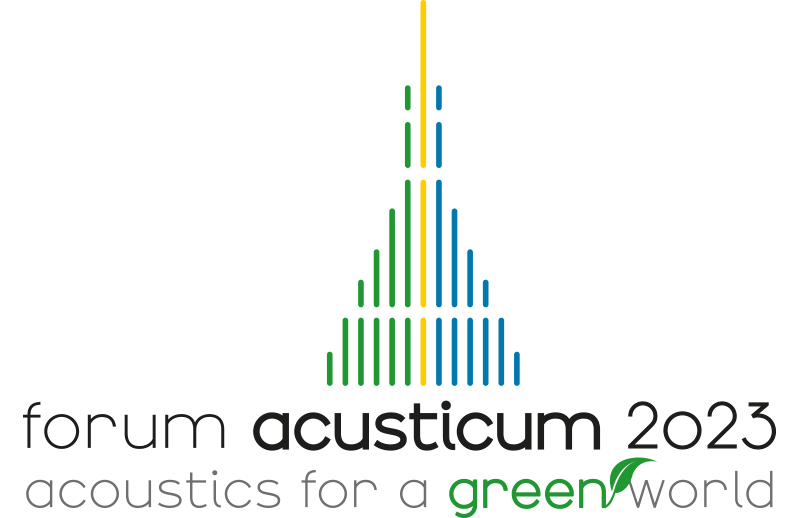

European Acoustics Association
Forum Acusticum 2023
Politecnico di Torino
Torino, Italy
September 11 - 15, 2023
 |
 |
Proceedings of the 10th Convention of the European Acoustics Association Forum Acusticum 2023 Politecnico di Torino Torino, Italy September 11 - 15, 2023 |
|
Abstract Transparent noise barrier panels are typically sound hard. In case of hard reflecting sidewalls of railway vehicles multiple reflections occur which lower the effect of noise barriers. Main factors influencing the insertion loss are height and vertical positioning of such reflecting elements as well as the distance between barrier and train. An important question is how such partially reflecting barriers can be considered accurately in standardized noise calculations methods. This study aimed on investigating the effect of such transparent/reflecting panels by means of extensive computational simulations with the 2.5D boundary element method which were previously validated using pass-by measurements. These calculations were used as a basis for comparison with the multiple reflection approach of the ÖAL28 calculation model which is the Austrian implementation of the calculation scheme introduced by the directive (EU) 2021/1226 in order to identify possible shortcomings and find potential solutions. Major findings were, that simply using the vertical profile of absorption coefficients of the noise barrier causes strong discontinuities which can be avoided by modeling the reflections using Fresnel-zones. Furthermore, lowering the source to the top of the rail and shifting the vertical plane close to real positions yielded an improvement compared to the reference calculations. |
||||||||||||||||||||